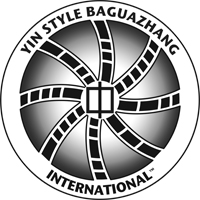By He Jinbao
Translation by Matt Bild
Yin style bagua, according to the form and meaning of the Eight Trigrams, has eight established animal systems, distinguished as follows: Qian trigram lion system interlocking palm, Kun trigram unicorn system reversing the body palm, Zhen trigram dragon system holding and lifting palm, Xun trigram phoenix system windmill palm, Kan trigram snake system moving with the force palm, Li trigram rooster system lying step palm, Gen trigram bear system turning the back palm, Dui trigram monkey system enfolding palm. Their developmental methods are divided into four main areas: standing, turning, striking, and changing. Standing refers to standing strengthening practices; turning is circle turning practice; striking means fighting techniques; changing is variations or transformations in technique. Each animal system has its own corresponding standing strengthening practices.
Qian Trigram Lion System Standing PracticeThe Book of Changes states: Qian is supreme stillness, The Qian trigram is comprised of three lines of yang, it has the meaning of continuity and not being broken. The lion system takes the form of the Qian trigram. Therefore, while training the standing strengthening practice for this system, you must be one qi, upper and lower, inside and out.
Training the lion system standing posture will benefit the function of the brain, strengthen bones and connective tissue, open up and remove blockages in the qi meridians, build qi, build strength, improve fighting ability and resistance to attack, improve the body’s sense of touch (martial “listening” ability), and develop a solid foundation for turning, striking, and changing practices.
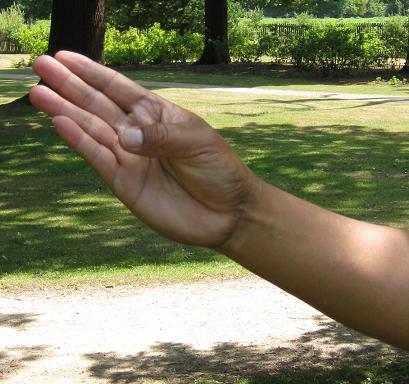
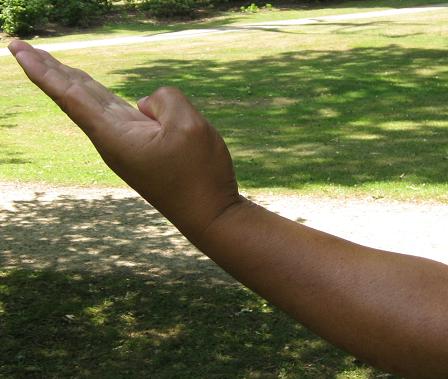
The practitioner should face south with his back to the north. Stand upright with both feet together, arms naturally hanging at the sides of the body. Calm the mind and quiet the breathing. Relax the whole body and focus the spirit.
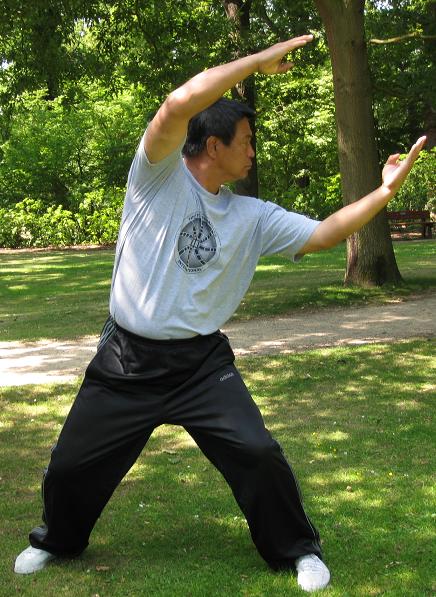
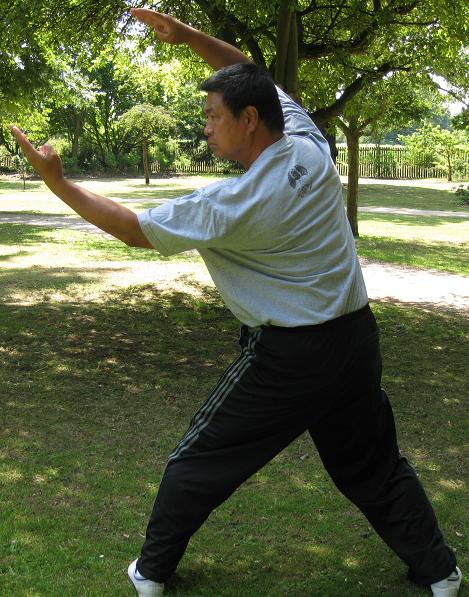
1. The left foot opens horizontally out to the left side three foot lengths, ending up standing with the feet parallel to one another. Your center of gravity should be placed between the two feet. At the same time, the two arms rise up, palms down, from the sides of the body to shoulder height. As the hands rise, you should have the feeling of lifting something up. Mentally, you should focus on the laogong point on the palms gathering in qi. Both feet are planted, the yongquan point hollowed out, with the toes grasping the ground. The breathing should be fine, long slow, and even.
2. The body sinks down, both palms press down as both legs bend slightly into a half horse stance. The four fingers of each hand are held together, with the thumb tucked in towards the laogong point, forming the ox tongue palm.
III. Holding the posture (left side)Turn the waist to the left, the left hand moves, palm up, past the head in a flinging down motion to the left, stopping at shoulder height. The right hand stabs out to the left, the elbow should be even in height with the top of the head, the upper arm about a fist width away from the ear. Both arms thus form the “lion opens his mouth” posture.
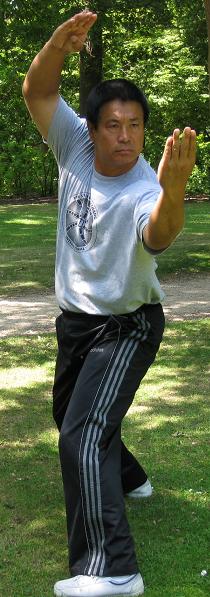
Requirements for each part of the body during standing practice
1. The head should push up slightly, tuck in the chin a bit, the neck should be straight. The eyes should watch the middle finger of the left hand.
2. The chest should be slightly concaved, the back protruded a bit. Contract the anus and lift up the testicles. The tongue should be placed against the roof of the mouth, and the qi should be sunk down in the dantian.
3. The waist turns to the left at about 45 degrees, the head turns to the left at about 75 degrees.
4. The left wrist is level, upright, square, and straight. The palm is facing up. The palm and forearm turn to the outside and stab forward. The upper arm folds back in, with a slight pulling back in away from the direction in which the forearm stabs. The left elbow is above the heel of the left foot. Relax the shoulder and drop the elbow. The angle between the upper and lower sections of the left arm is about 150 degrees.
5. The right wrist hooks down, the right palm is facing down. The palm and forearm wrap back in and stab forward. The upper arm turns out to the outside, with a bit of pulling back away force (containing the meaning of rolling out, wrapping back in, pulling away, and drilling forward).
6. Both upper arms expand out while both forearms have a hugging in force. Both palms stab forward. The left arm contains the thought of sweeping, cutting, chopping, and hooking. The right arm contains the idea of shocking, blocking, seizing, and grasping.
7. The left upper leg presses down, the lower leg’s strength moves up. The right upper leg’s force lifts up, while the lower leg steps down with force. The toes of both feet grasp the ground as the two legs use force in an opposing manner.
IV. ClosingThe body turns to the right, the face looks back to the south. The center of gravity is shifted to the right leg. At the same time, both hands naturally move to the front of the chest forming a crossed shape, left over right, the center of both hands facing inward. After the arms cross, they then separate and move down and then back up in an arc, coming down in front of the chest, palms down, the fingers of each hand pointing inward toward the fingers of the other. At the same time, the left foot draws back in next to the right foot, knees together. Both eyes are kept level. Adjust your breathing as the body gradually stands back up straight, returning to the preparatory posture.
V. Right sidePerformed opposite to the left side, all requirements are the same as listed above.
Kun Trigram Unicorn System Standing Practice
The Book of Changes states: The method of Kun is to follow. One who acts as Kun, obeys.
The unicorn system takes the form of the Kun trigram. Therefore, while training the standing strengthening practice for this system, you must be mild and gentle above and below, inside and out.
Training the unicorn system standing posture will benefit the function of the spleen and stomach, invigorate the blood circulation and produce qi. Relax the muscles and enliven the meridians, strengthen connective tissue and bones, increase flexibility and adaptedness. It will help to develop a sensation of empty quickness and the feeling of rising up in flight to help develop a good foundation for turning, striking, and changing practices.
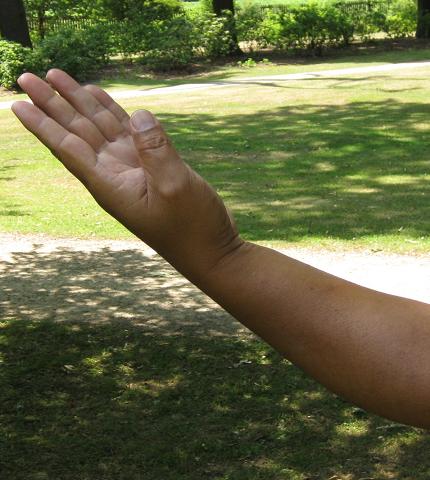
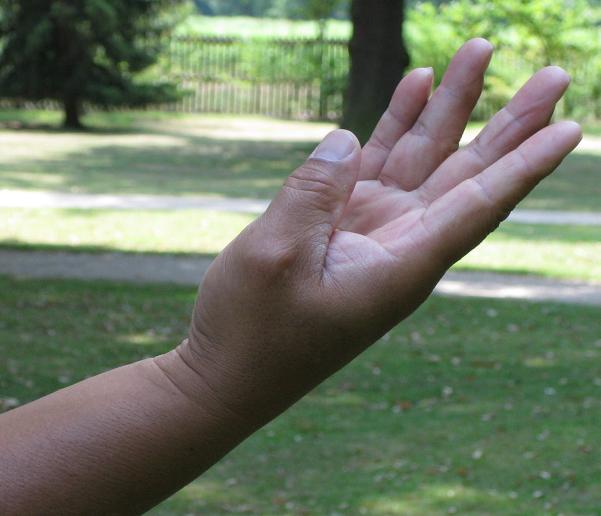
The practitioner should face south with his back to the north. Stand upright with both feet together, arms naturally hanging at the sides of the body, calm the mind and quiet the breathing. Relax the whole body and focus the spirit.
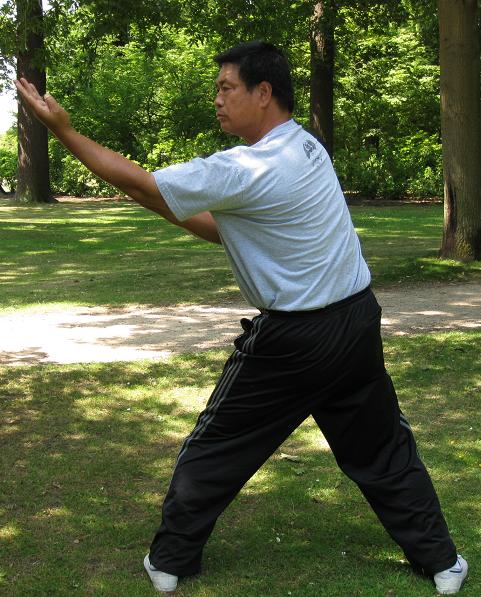
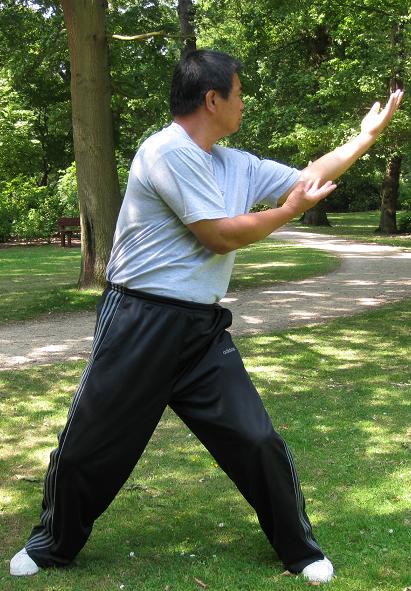
1. The right foot opens horizontally out to the right side three foot lengths, standing with the feet parallel to one another. Your center of gravity should be placed on the right leg. At the same time, the two arms slowly rise up, palms up, from the sides of the body to shoulder height. As the hands rise, you should have the feeling of lifting something up. Mentally, you should focus on the laogong point at the center of the palms gathering in qi. Both feet are planted, the yongquan point hollowed out, with the toes grasping the ground. The breathing should be fine, long slow, and even.
2. The body sinks down slightly, both palms naturally lower as both legs bend slightly into a half horse stance. The four fingers of each hand are held together and slightly curled in, with the thumb held in, forming the ox tongue palm.
III. Holding the posture (right side)The head turns to the right, the waist turns with the head. The right hand is lifted up until it is at shoulder height. At the same time, the left hand moves upward past the head, then is brought down and to the right until it is about a fist width below the right elbow, thus forming the “Unicorn spits out her tongue” posture. The front hand is extended out in the ox tongue palm, the rear hand is hidden, waiting in ambush, below the front elbow.
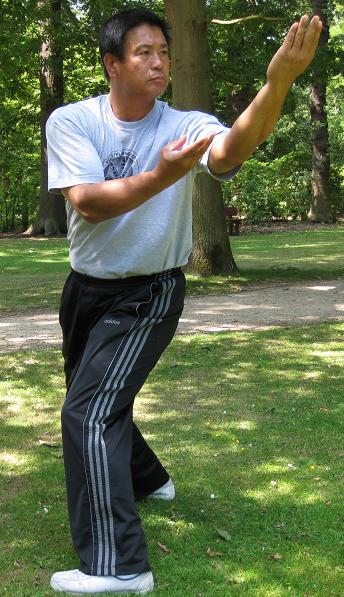
1. The chest is slightly concave, while the back is protruded a bit. Pull in the abdomen and lift up the buttocks. The tongue is held against the roof of the mouth. The neck should be held straight and you should look at the pinky finger of the right hand. Your intent should be focused on the mingmen point at the small of the back.
2. The waist turns to the right at about 105 degrees. The head turns about 90 degrees to the right. The right hand is held, palm up, at shoulder height. The upper and lower arms are revolving to the outside and stabbing forward. Relax the shoulders and concave the chest. The angle between the upper and lower sections of the left arm is about 150 degrees.
3. The palm of the left hand faces up, the arm pressing downward and slightly turning outward. The left hand being held about a fist width away from the right elbow, directly above the heel of the right foot. The left elbow is also about a fist width in front of the solar plexus. The angle between the upper and lower sections of the left arm is about 120 degrees. The left arm is held with a pulling back away force, such that the two arms are using an opposing force.
4. Both arms cover to the inside, with a slight rising upward as well. The right hand contains the thought of bumping, striking, chopping, and stabbing. The left arm contains the thought of sticking, adhering, soft, and following.
5. The force in both the upper and lower legs lifts upward. The right leg is set in the center; the left leg is pushing forward. Both legs are using an opposing force, in the midst of mutual interchange.
IV. ClosingThe body turns to the left, the face looks back to the south. The center of gravity is shifted to the left leg. At the same time, both hands naturally move to the front of the chest forming a cross shape, right over left, the center of both hands facing inward. After the arms cross, they then separate and move down and then back up in an arc, coming down in front of the chest, palms down, the fingers of each hand pointing inward toward the fingers of the other. At the same time, the right foot draws back in next to the left foot, knees together. Both eyes are kept level. Adjust your breathing. The body gradually stands back up straight, returning to the preparatory posture.
V. Left sidePerformed opposite to the right side, all requirements are the same as listed above.
